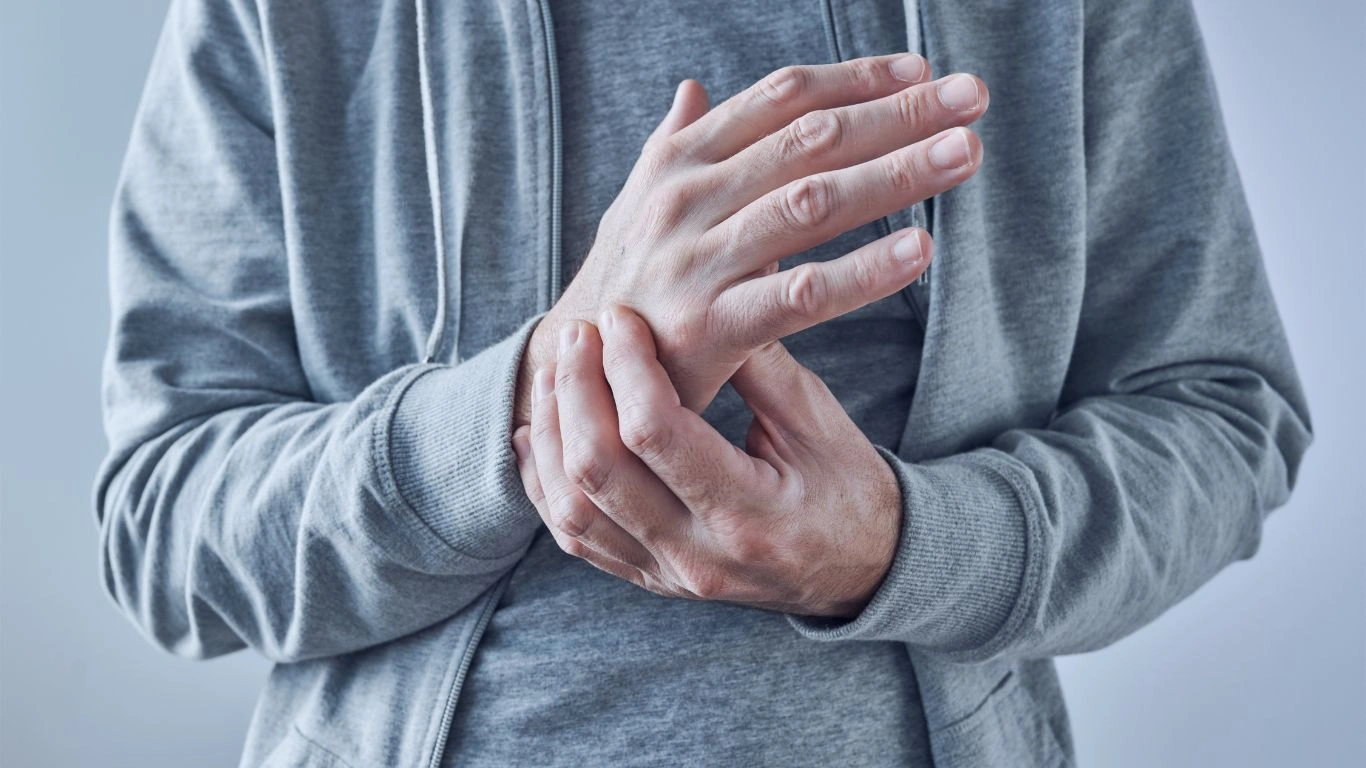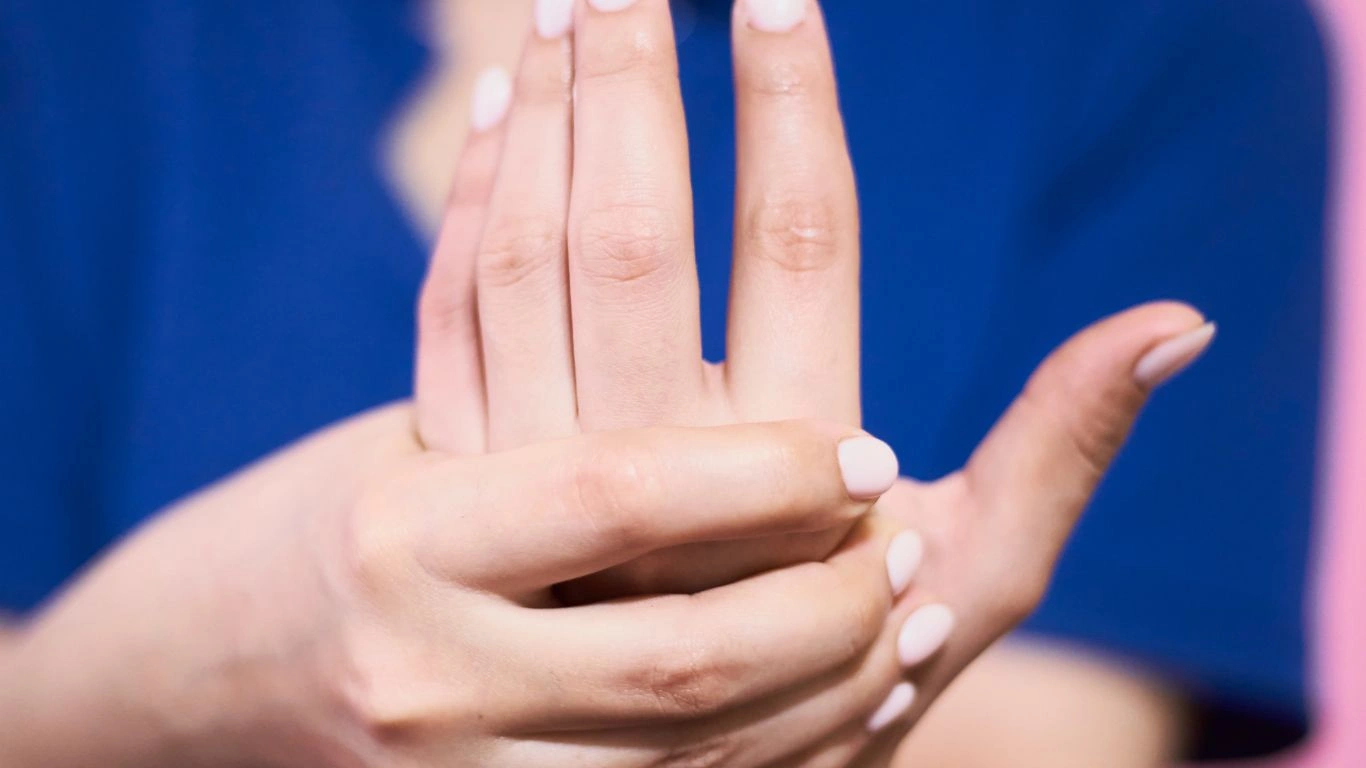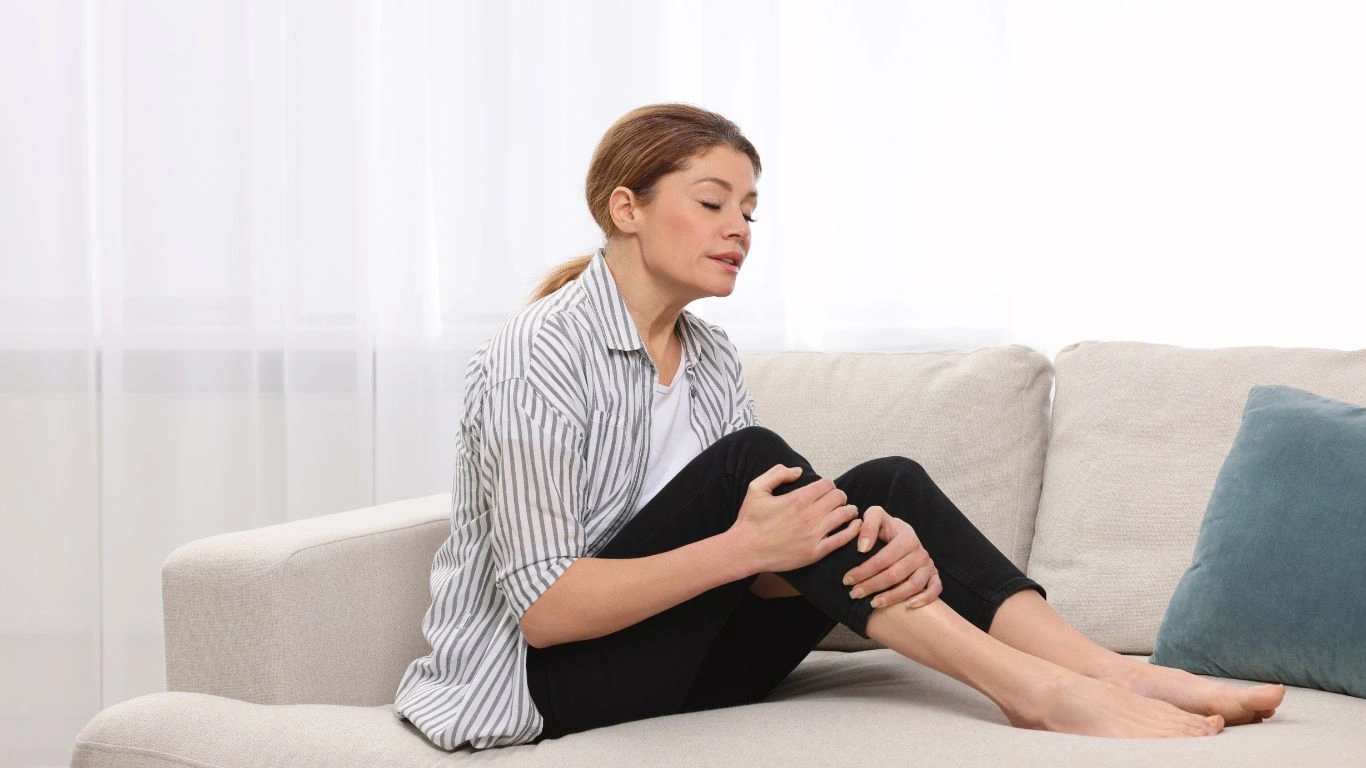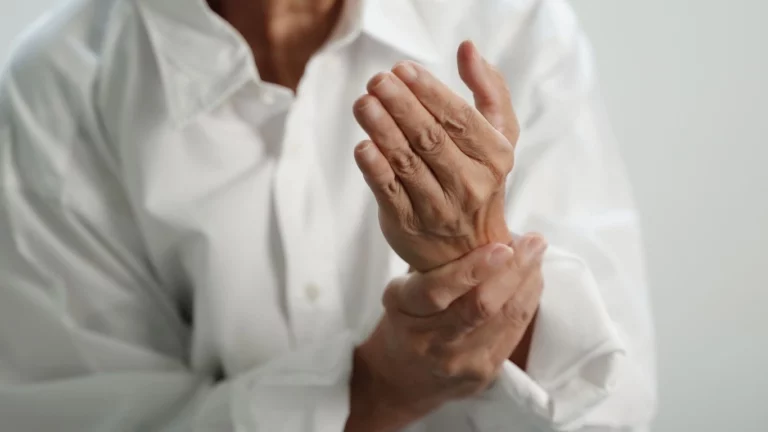Benefits of Heat Therapy for Rheumatoid Arthritis Pain Relief
As a Rheumatology Nurse Practitioner, I’ve seen firsthand how rheumatoid arthritis (RA) can truly take a toll on someone’s daily life. It’s not just about pain – it’s the stiffness, the swelling, and the constant discomfort that can leave people feeling stuck in a cycle of flare-ups. One thing that often comes up in conversations with patients is the search for ways to manage RA symptoms effectively. While there’s no one-size-fits-all answer, something I often recommend and see great results with is heat therapy. It may sound simple, but the benefits of heat therapy for rheumatoid arthritis are numerous, and it’s a non-invasive, easily accessible option that can complement other treatments. In this article, let’s dive into the *why* and *how* heat therapy can be a game-changer for those managing rheumatoid arthritis.
Understanding Rheumatoid Arthritis and the Role of Heat Therapy

Rheumatoid arthritis is an autoimmune condition that causes the body’s immune system to mistakenly attack its own joints. This can lead to chronic inflammation, pain, and eventually damage to the joints. While it primarily affects the smaller joints in the hands, wrists, and feet, RA can impact any joint in the body. It’s important to note that the pain can be unpredictable – some days are better than others, and flare-ups can happen out of the blue. For people living with RA, managing these symptoms is key to maintaining a good quality of life. That’s where heat therapy comes in.
How Heat Therapy Works for Rheumatoid Arthritis Pain
Heat therapy is a simple yet effective treatment that involves applying heat to affected areas of the body. The heat can help by improving blood flow to the affected joints and relaxing the muscles around them. When applied correctly, heat therapy can reduce stiffness, ease pain, and promote healing. It’s particularly beneficial for people with RA, as it targets the muscle spasms and joint stiffness that accompany the condition.

Think of it this way: when you’ve got a sore muscle or a stiff joint, applying heat can feel incredibly soothing. The warmth increases blood flow, which brings more oxygen and nutrients to the area, helping the body heal faster. It can also help the tissues around the joints relax, which alleviates some of the tightness you might feel. This can be especially helpful in the morning when stiffness is at its worst, or before physical activity to prepare the body.
The Benefits of Heat Therapy for RA Patients

If you’re wondering whether heat therapy is really worth it, let’s break down some of its top benefits:
- Relieves Joint Stiffness – RA often comes with significant joint stiffness, especially in the morning. Heat therapy can be a lifesaver in these situations by loosening up those stiff joints, making it easier to move and get through your day.
- Reduces Pain – The heat helps to relax muscles and improve circulation, which can reduce pain and discomfort. It’s a great way to soothe flare-ups and make daily activities more manageable.
- Improves Flexibility – Regular use of heat therapy can help improve flexibility in the affected joints, allowing for better range of motion. This is especially helpful when RA leads to reduced mobility.
- Promotes Healing – By increasing blood flow to the affected areas, heat therapy can also support the healing process by supplying nutrients and oxygen to damaged tissues.
Heat Therapy vs. Cold Therapy: Which One Is Right for You?
When it comes to managing RA pain, many people wonder whether heat or cold therapy is the best option. Both have their benefits, but they work in different ways. Cold therapy is typically used to reduce inflammation and numb pain, making it great for acute flare-ups or when there’s swelling. On the other hand, heat therapy is better suited for muscle relaxation, reducing stiffness, and promoting circulation. In many cases, alternating between heat and cold can provide a comprehensive approach to managing RA symptoms.
When to Use Heat Therapy for RA
Heat therapy can be used at different times depending on your symptoms. Here are a few guidelines:
- For Morning Stiffness: If you wake up feeling stiff and sore, a warm shower or heating pad can help loosen things up before you start your day.
- Before Physical Activity: Applying heat before you exercise or engage in activities can help prepare your joints and muscles, reducing the risk of injury.
- During a Flare-Up: Heat therapy can also be used during flare-ups to alleviate pain and discomfort. Just make sure not to use it when there’s significant swelling, as heat could make it worse.
Different Methods of Heat Therapy
There are several ways to apply heat therapy for RA pain relief. Some of the most common methods include:
- Heating Pads – A classic choice, heating pads are easy to use and provide targeted heat to a specific area of the body. They can be adjusted to your preferred temperature and are perfect for use at home.
- Warm Baths – Immersing your body in a warm bath is not only relaxing but can also provide all-over relief for joint pain and stiffness. Adding Epsom salts can enhance the benefits.
- Hot Towels – You can warm up a towel in the microwave or with hot water and apply it to your joints for a quick and portable solution. This is especially useful for people on the go.
- Heat Wraps – These are wearable heat pads that you can strap around your joints, like wrists or knees. They’re perfect for people who need pain relief throughout the day.
Ultimately, finding the right method for your needs is key. Some people prefer the convenience of a heating pad, while others enjoy the soothing effect of a warm bath. Whatever you choose, the goal is to find relief and improve your comfort during flare-ups and beyond.
How to Safely Incorporate Heat Therapy into Your Routine

While heat therapy is generally safe and effective for many people with rheumatoid arthritis, it’s important to use it correctly to avoid any adverse effects. As someone who works closely with RA patients, I’ve seen how the wrong approach can do more harm than good. Here are some practical tips for incorporating heat therapy into your routine safely and effectively:
Start with Short Intervals
When you first begin using heat therapy, it’s a good idea to start with short intervals – think about 15-20 minutes at a time. This allows your body to adjust to the heat without overwhelming the area. For instance, if you’re using a heating pad, don’t leave it on for hours at a stretch. Give your skin and tissues a break, especially if you’re using direct heat.
Over time, you can increase the duration as you become more accustomed to the sensation and if you feel comfortable with it. But be sure to listen to your body—if it starts feeling too hot or uncomfortable, it’s a signal to remove the heat source and cool down for a bit.
Never Apply Heat to Swollen Joints
This is a mistake I’ve seen a lot of people make, especially when dealing with an RA flare-up. If your joints are swollen and inflamed, heat therapy might make things worse. In such cases, cold therapy is usually the better option, as it helps to reduce swelling and numb the pain. Heat is most effective when the pain is due to stiffness, not swelling. So, be mindful of the condition of your joints before applying heat therapy.
Check the Temperature
Whether you’re using a heating pad, hot towel, or taking a warm bath, it’s crucial to ensure the temperature is just right. You want it warm enough to soothe and relieve pain but not so hot that it could burn or irritate the skin. This is particularly important for people with sensitive skin, as RA can make the skin more delicate in areas of inflammation. Always test the heat source with your hand before applying it to the affected joint to avoid accidental burns.
Alternative Heat Therapy Options for RA Relief

If you’re looking to shake up your heat therapy routine or want something different than the typical heating pad or warm bath, there are plenty of alternatives to explore. Here are a few options you might not have considered yet:
Infrared Heating Pads
Infrared heating pads are gaining popularity among people with RA for their deep-penetrating heat. Unlike traditional heating pads that warm up the surface of the skin, infrared pads emit heat that can go deeper into the tissues and joints. This means they can target the source of the pain more effectively. Some people find that infrared heat provides longer-lasting relief, which makes it a great investment for anyone managing chronic pain.
Far-Infrared Saunas
Far-infrared saunas are another excellent option for those looking to combine heat therapy with relaxation. These saunas use infrared light to heat the body directly, which can provide a gentle, soothing heat that penetrates deeper into the tissues. Not only do they help with muscle relaxation and joint stiffness, but the added benefit of relaxation in a sauna can help reduce stress—something that’s crucial when managing RA.
Hot Stone Therapy
If you enjoy a spa experience, hot stone therapy might be just what you need. This method involves placing smooth, warm stones on specific areas of the body. The heat from the stones helps to relax muscles and improve circulation, which is especially beneficial for people with RA. Many massage therapists offer this technique, and it can provide a deeply relaxing and therapeutic experience.
Gel Packs and Heat Wraps
If you’re someone who likes the flexibility of portable heat, gel packs and heat wraps might be your best friend. You can microwave or freeze them, depending on whether you’re looking for heat or cold therapy. The beauty of these wraps is that they’re designed to contour to your body, making them perfect for areas like the neck, back, and knees. The best part? They’re easy to use while on the go—whether you’re at home, work, or traveling.
How Heat Therapy Can Be Used in Combination with Other Treatments
When managing rheumatoid arthritis, it’s often a multi-pronged approach that yields the best results. Heat therapy should be seen as just one tool in your pain-management toolbox. It works beautifully in combination with other treatments, such as medication, exercise, and physical therapy. In fact, many of my patients who experience long-term relief swear by using heat therapy alongside their prescribed treatments.
Using Heat Therapy with Medication
If you’re taking medications like disease-modifying antirheumatic drugs (DMARDs) or biologics, heat therapy can serve as a complementary treatment. These medications target the underlying causes of RA and help reduce inflammation, while heat therapy works to alleviate the pain and stiffness that comes with the disease. It’s a good idea to discuss with your doctor how you can best incorporate both into your daily routine for maximum relief.
Physical Therapy and Heat Therapy
Many people with RA benefit from physical therapy, which focuses on exercises to improve joint function, reduce pain, and increase flexibility. Heat therapy can be a great adjunct to your physical therapy routine. Applying heat before your exercises can help warm up the muscles and joints, making it easier to move through your stretches and strengthening exercises. It can also be helpful after therapy to reduce soreness and relax any tight muscles.
Mindfulness and Heat Therapy
On a more holistic note, combining heat therapy with mindfulness techniques can have a profound impact on how you experience RA pain. Mindfulness practices, such as meditation or deep breathing exercises, can help you manage the emotional and psychological effects of living with chronic pain. When combined with heat therapy, the soothing warmth can make it easier to focus on your breathing and calm your mind. It’s like a mental reset for your body.
Can Heat Therapy Be Used for Long-Term RA Management?
Heat therapy is a great short-term solution, but can it help in the long run? Absolutely! For many people with RA, regular use of heat therapy can be an effective part of their long-term pain management strategy. Of course, it’s important to combine it with other therapies and lifestyle adjustments, such as staying active, eating an anti-inflammatory diet, and maintaining a healthy weight. Over time, heat therapy can help improve flexibility, reduce pain episodes, and prevent further joint damage.
However, it’s always a good idea to check in with your healthcare team regularly to make sure your treatment plan is working for you. RA can vary greatly from person to person, and what works for one individual may not be as effective for another. With that said, I’ve seen so many of my patients get incredible relief from the simple practice of using heat therapy regularly. It’s definitely something worth trying!
Real-Life Success Stories: Heat Therapy for RA Management

As a Rheumatology Nurse Practitioner, one of the most rewarding aspects of my job is seeing how simple interventions like heat therapy can make a huge difference in my patients’ lives. I’ve had numerous patients share their success stories, and it’s always heartening to see how something as straightforward as a heating pad or a warm bath can bring so much relief. Let me share a few of these stories to give you a better idea of how heat therapy has helped people just like you.
Case 1: Sarah’s Morning Stiffness Relief
Sarah, a 52-year-old woman with RA, came to me after struggling with severe morning stiffness for months. She couldn’t even hold her coffee cup without wincing in pain. We discussed heat therapy as part of her morning routine. I suggested she try a heated blanket or a warm shower before starting her day, to help loosen up her joints.
After a few weeks, Sarah reported significant improvement. The heat helped her feel more mobile in the mornings, and she could finally get through her daily routine without the debilitating stiffness she once faced. For Sarah, the biggest change wasn’t just the physical relief—it was the emotional boost she got from starting her day on a more positive note. Sometimes, the emotional effects of chronic pain are just as important as the physical relief.
Case 2: John’s Pre-Activity Heat Therapy
John, a 45-year-old man with RA, was an avid golfer. However, his RA had severely limited his ability to play, especially in the colder months when his joints were extra stiff. After discussing heat therapy, I suggested he try using a heating pad or warm compress on his hands and knees before heading out for a round of golf.
John was skeptical at first, but after a few tries, he noticed a significant reduction in his joint stiffness, and he could move more freely. Heat therapy gave him the flexibility he needed to enjoy his sport without worrying about his joints locking up during a swing. It didn’t take the pain away entirely, but it made a world of difference in how he felt on the golf course.
What the Experts Say About Heat Therapy for RA

While personal experiences are powerful, I always encourage patients to look at what the broader medical community says. Heat therapy has garnered support from both physical therapists and rheumatologists as a useful tool for managing rheumatoid arthritis symptoms. Numerous studies have examined the benefits of heat therapy, particularly its role in reducing pain, improving flexibility, and enhancing blood circulation.
According to the American College of Rheumatology, non-pharmacological therapies, including heat and cold treatments, are essential for managing RA and improving quality of life. They emphasize that heat therapy, in particular, can help with managing stiffness and relieving the discomfort associated with chronic inflammatory diseases like RA.
Another key point is the importance of combining heat therapy with other interventions. The National Institutes of Health (NIH) has highlighted that a multi-faceted approach—combining physical therapy, medications, and heat therapy—tends to be the most effective strategy for managing RA symptoms over time. This holistic approach helps address both the root causes of RA and its symptoms, ensuring that patients experience more consistent relief.
Important Considerations and Precautions When Using Heat Therapy
While heat therapy is generally safe for most people, there are a few things to keep in mind. It’s crucial to always consult with your doctor before introducing any new treatment into your RA management plan. As much as heat therapy can be effective, it’s not always suitable for everyone, and your healthcare provider can guide you on how best to incorporate it based on your individual needs and medical history.
People with Certain Health Conditions
If you have other health conditions, like diabetes or poor circulation, you should be cautious with heat therapy. For example, people with diabetes may have reduced sensation in their skin, which makes it easier to accidentally burn themselves with a heating pad or warm compress. In such cases, it’s important to monitor the temperature closely and avoid using heat therapy for extended periods.
Never Use Heat on Acute Inflammation or Swelling
As mentioned earlier, heat therapy should not be used on swollen or inflamed joints. Heat can exacerbate inflammation, which could make your symptoms worse. Always evaluate your joints before applying heat. If they’re swollen and hot to the touch, it’s time to switch to cold therapy instead. Cold packs can help numb the pain and reduce inflammation in a way that heat can’t.
Disclaimer
The information provided in this article is based on my personal experience as a Rheumatology Nurse Practitioner and general knowledge of heat therapy’s use in managing rheumatoid arthritis. It is not intended to replace professional medical advice, diagnosis, or treatment. Always consult your healthcare provider before starting any new treatment, including heat therapy, especially if you have underlying health conditions.
Individual responses to heat therapy can vary. Some people with rheumatoid arthritis may experience significant relief, while others might find it less effective. Always listen to your body and work with your healthcare team to determine what treatments will best suit your specific needs. If you experience any adverse effects, such as burns, irritation, or worsening pain, discontinue use and consult your healthcare provider.
Additional Resources for Managing Rheumatoid Arthritis
If you’re looking for further information on managing rheumatoid arthritis and exploring other therapeutic options, here are a few helpful resources:
- Health.com – A trusted resource for health tips and expert opinions on managing RA.
- National Institutes of Health (NIH) – For in-depth research and up-to-date information on arthritis and related conditions.
- American College of Rheumatology – A valuable site for professional guidelines and research on RA treatment.
- Centers for Disease Control and Prevention (CDC) – Offers valuable tips for living well with arthritis and links to community resources.

Tarra Nugroho is a dedicated Nurse Practitioner with a strong foundation in family and preventive care. She brings both compassion and clinical expertise to her practice, focusing on patient-centered care and health education. As a contributor to Healthusias.com, Tarra translates medical knowledge into clear, empowering articles on topics like women’s health, chronic disease management, and lifestyle medicine. Her mission is simple: help people feel seen, heard, and informed—both in the clinic and through the content she creates. When she’s not caring for patients, Tarra enjoys weekend hikes, plant-based cooking, and curling up with a good health podcast.






